For Italian version please scroll down
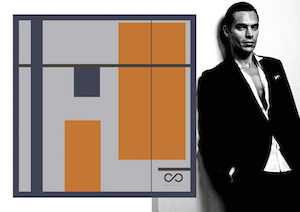
Sammy Voigt
Foto: Michel Conte
At the very beginning of my stay in Berlin, to my disappointment, I was often surprised as I critically and humorously observed the clothes that other people were wearing. I had, however, to a large extent, already lost of the wonder of a typical tourist confronted with the cultural, culinary and climatic differences of a foreign country.
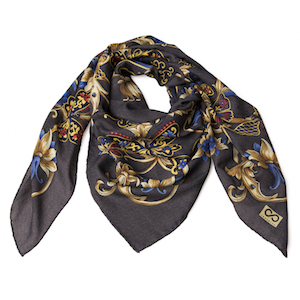
Infinity
Foto: Mizuki Kin Tachibna
I am not referring to the extravagant miss of the younger boys, the chaste tunics worn by the muslim women, the sometimes excessive style of the ‘people of the night’, nor the studs worn by some nostalgic punk. I mean the fairly widespread sloppiness, or rather the general sloppiness and sometimes even the simple lack in taste to combine colours and/or fabrics.
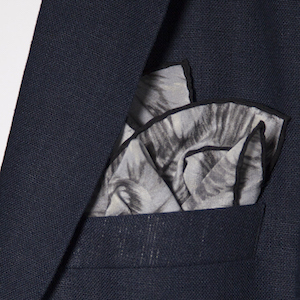
Infinity
Foto: Mizuki Kin Tachibna
As somebody accustomed to catwalks full of sophisticated outfits (even a bit exaggerated at times), I was very impressed by this huge difference. Even when I was a lawyer in Italy, I could show off in Court in front of colleagues, both men and women.
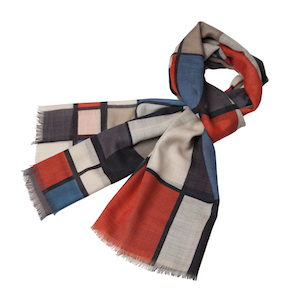
Infinity
Foto: Mizuki Kin Tachibna
I was used to the refinement of the ladies from the Vomero neighbourhood and the fashionable haircuts of the suited Lords, a little bit old fashioned with their suit jackets and ties, or a manic display of designer clothes on people who spent more than the really afford in order to show off a recognisable identity through status symbols. As an advocate of freedom and diversity, I am prone to reproach myself, if by chance I catch myself dwelling on trial things, I immediately tried to frame the problem from a different perspective. I considered this way of dressing as something original and related to people’s personality as opposed to their social status.
During the long winter in Berlin, you have to wear layers
I also noticed that, apart from all the tourists and groups of residents from other countries, even here amongst the younger generations, there is a sense of fashion that unites and in one sense creates a uniform for groups of people.
For example, the young Turkish guys from Kreuzberg / Neukölln, prefer to wear short and clingy sweaters and jackets that reveal their muscles. The German kids on the other hand, are more alternatively dressed in Kreuzberg, whilst in Schöneberg and Charlottenburg, they all wear long, comfortable coats with tight jeans that work perfectly on young and skinny legs. The black kids in Görlitzer wear jeans that are buttoned well below the hips, paired with hooded sweatshirts over their heads and sneakers. Style analysis aside, the climate, obviously, plays an important role in one’s choice of clothes. During the long winter in Berlin, you have to wear layers in order to easily move from the cold outside to the heated interiors. So evenutally, after attempting to make sense out of the various and numerous combinations of garments, originality gives way to comfort. In short, it is not so easy to understand the reasons for these aesthetic differences, but one thing that is worth pointing out, is that in Italy, fashion has a meaning and a value which is incomprehensible to the multinational money making machines that produce „made in Italy „in China, and for whose bosses quality is less important in comparison to a visible logo of a brand that is trendy and “style of the week” in Milan.
In Italy, fashion has a meaning and a value
Tailoring, design and research in fashion therefore carry a great sense of pride in Italy. It took a very long conversation with a very smart guy, who had a really interesting story, for me to realise this fact. His name is Sammy Voigt and lives in Berlin, but has a past and a present that bind him to Italy and also to the best sense of the so-called term ‘Made in Italy.’
Inside the symmetrical Bauhaus building of Soho House Berlin, sitting at the Club Bar on the top floor, Sammy told me that in 2001, while he was on the beach in Rio de Janeiro, he was spotted by photographer Michel Comte who invited him to take part in the project that was being made for the glossy magazine „Uomo Vogue Italy“. From that moment on, his life has changed dramatically.
He moved to Italy and immediately began working as a model for fashion houses and parading on the most prestigious catwalks in the world, including Paris, Milan and Tokyo. After many years in this environment and having had the opportunity to meet people and become an expert in the field, in 2011 Sammy, who was in Berlin for fashion week, took to flight a new opportunity offered to him as a collaborator – as PR – branches of glasses „Ic Berlin“. To begin this new challenge, Sammy decided to move to the German capital, a city full of positive energy and promising initiatives in the field of fashion and, more generally, a city which was in full artistic ferment. But the link with Italy, evidently, was stronger than he had previously believed. Sammy, in fact, told me that, thanks to the experience gained in the field of fashion, to design and to the Italian research in textile craft, he founded an elegant and sophisticated line of scarves and accessories made of fine Italian fabrics of the best manufacture and quality. Besides the beauty of the luxury and the obvious quality and texture of the products, the most innovative and biggest success of „Infinity“ (the company’s bran name), is its low environmental impact in producing and processing the fabrics. To obtain a high quality product, Sammy works with the Italian firm, Canepa, who, with their „save the water” project, use environmentally sustainable production techniques. To dye the fabric, the company from Como, has patented a technique that uses about 80% less water than the normal dyeing processes, wastes less energy and does not require the use of chemicals. The union is surprising: the highest quality fabrics inspire Sammy to create his fine line of scarves. In short, the success of Infinity is the successful synthesis of Sammy’s styles, which so perfectly embraces Italian creativity and the Bauhaus movement’s operational commitment. After this pleasant meeting, I could not help but wish Sammy all the luck he deserves, in creating new connections between art and industrial production, which has successfully found.
La mia vita a Berlino 5_ My life in Berlin 3 Nicola Campanelli
Danzatore, avvocato, autore di un libro autobiografico pubblicato in Italia con uno pseudonimo, appassionato di arte, viaggi, e più in generale della vita, lascia la professione di avvocato e si trasferisce a Berlino dove insegna pilates e studia il tedesco. Continua a coltivare la scrittura collaborando con diversi magazines on line, tra cui: crazymaryrevista.com e www.campadidanza.it. Sempre alla ricerca di posti suggestivi e cose nuove da scoprire, questa volta si è soffermato a riflettere sul look dei tedeschi e ha incontrato un giovane stilista nella Soho Hause Berlin

Sammy Voigt
Foto: Michel Conte
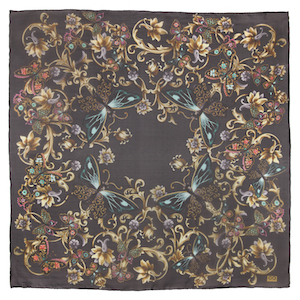
Infinity
Foto: Mizuki Kin Tachibna
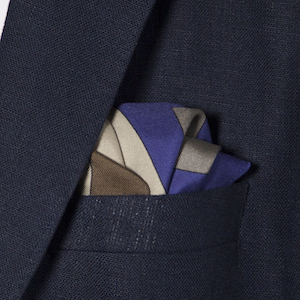
Infinity
Foto: Mizuki Kin Tachibna
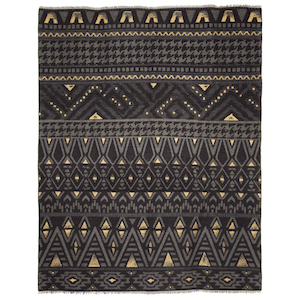
Infinity
Foto: Mizuki Kin Tachibna
Mode e tendenze
Ho notato inoltre che, se si escludono i numerosi turisti e i gruppi di residenti provenienti da altri paesi, anche qui tra i più giovani esistono mode che tendono ad accomunare e in qualche modo a uniformare.
I ragazzi turchi di Kreuzberg/Neukölln, per esempio, prediligono maglie e giubbini corti e fascianti che ne evidenzino i muscoli. I ragazzini tedeschi, invece, mentre qui a Kreuzberg sono più alternativi, a Schöneberg e a Charlottenburg, indossano tutti jeans attillati, che aderiscono a gambe giovani e magrissime, e cappottini lunghi e comodi. I ragazzi neri di Görlitzer portano jeans abbottonati molto al di sotto dei fianchi, felpe col cappuccio alzato e scarpe da ginnastica.
Analisi di stile e valutazioni di merito a parte, come è ovvio, un ruolo importante nella scelta dei vestiti, lo gioca il clima.
Durante il lungo inverno berlinese, bisogna vestirsi a strati per passare agevolmente dall’esterno freddo agli ambienti interni riscaldati, per cui dopo i primi tentativi di dare un senso ai diversi e numerosi abbinamenti tra i capi da combinare, l’originalità cede il passo alla comodità.
Una storia davvero interessante
Insomma, non è così semplice capire le ragioni di queste differenze estetiche, ma una cosa che vale la pena di sottolineare, è che in Italia la moda ha un significato e un valore tale da risultare incomprensibile alle multinazionali ‘macinasoldi’ che producono il loro “made in Italy” in Cina, e per le quali la qualità dei loro capi è di gran lunga meno importante del logo in bella vista, del brand che fa tendenza e della “settimana della moda” a Milano.
La sartoria, il design e la ricerca in fatto di moda costituiscono dunque un grande vanto italiano. Per rendermene conto, ho dovuto parlare a lungo con un ragazzo molto in gamba, e con una storia davvero interessante.
Lui si chiama Sammy Voigt, vive a Berlino, ma ha un passato e un presente che lo legano all’Italia e alla migliore espressione del cosidetto made in Italy.
Nell’edificio dalla simmetrica architettura Bauhaus della Soho House di Berlino, seduti al Club Bar all’ultimo piano, Sammy mi ha raccontato che nel 2001, mentre era in spiaggia a Rio de Janeiro, venne notato dal fotografo Michel Comte che lo invitò a prendere parte al servizio che stava realizzando per la rivista patinata “Uomo Vogue Italia”. Da quel momento la sua vita è radicalmente cambiata.
Da modello a stilista di successo
Trasferitosi in Italia, cominciò subito a lavorare come modello per importanti case di moda e a sfilare sulle passarelle più prestigiose del mondo, tra cui quelle di Parigi, Milano e Tokio.
Trascorsi numerosi anni in questo ambiente, avendo avuto l’opportunità di conoscere persone e divenire un esperto del settore, nel 2011 Sammy, recatosi a Berlino per la fashion week, colse a volo una nuova occasione che gli venne offerta come collaboratore – in qualità di PR – della ditta di occhiali “Ic Berlin”.
Per iniziare questa nuova sfida, Sammy decise di trasferirsi nella capitale tedesca, città piena di energie positive e di promettenti iniziative nel campo della moda e, più in generale, in pieno fermento artistico.
Ma il legame con l’Italia, evidentemente, era più forte di quanto non credesse.
Sammy, infatti, mi ha raccontato che, grazie all’esperienza acquisita nel campo della moda, del design e della ricerca italiana nell’artigianato tessile, ha fondato un’elegante e sofisticata linea di sciarpe e accessori realizzati in pregiati tessuti italiani della migliore fattura e qualità.
Oltre alla bellezza delle fantasie e alla evidente qualità e tessitura dei prodotti, l’aspetto più innovativo e vincente della “Infinity” (è questo il nome del suo brand), consiste nel basso impatto ambientale nella produzione e lavorazione dei tessuti.
Per ottenere un prodotto di altissima qualità, Sammy si rivolge alla ditta italiana Canepa che, con il progetto “save the water”, utilizza tecniche di produzione eco sostenibili. Per la colorazione dei tessuti la ditta comasca ha brevettato una tecnica che utilizza circa l’80% di acqua in meno dei normali processi di colorazione, spreca meno energia e non prevede l’uso di prodotti chimici.
L’incontro è sorprendente: tessuti di altissima qualità ispirano Sammy nella creazione della sua raffinata linea di sciarpe.
In breve, il successo della Infinity è nella felice sintesi dello stile di Sammy, che così bene racchiude la creatività italiana e l’impegno operativo del Bauhaus.
Dopo questo piacevole incontro, non ho potuto far altro che augurare a Sammy tutta la fortuna che merita, per le nuove connessioni tra arte e produzione industriale, che ha saputo trovare.
